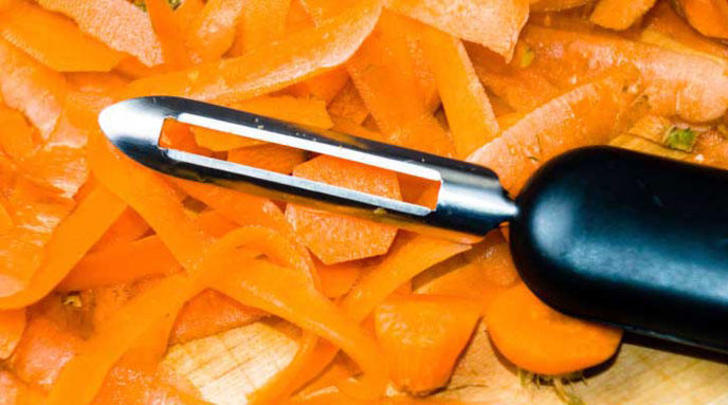Small steps
Tips for waste-free food
Green Ideas editorial team

Simple stock
“I never throw any part of a vegetable away. I have a plastic bag in the freezer where I put broccoli stalks, carrot peels etc, and then when it gets full, I boil it for a few hours in water, making my own vege stock. I then throw the cooked vege parts to the chooks... who in turn make me my eggs! I also boil up chicken bones and fish heads/bones to make chicken stock and fish stock.”
Pennie O’Connor, Auckland
Make your own soy milk
“Homemade soy milk can be easily made; costs a fraction of the price of commercial milk and you control what is in it. This recipe makes between 1.5–2 litres and costs approx.. $1 depending on the price of the beans.”
You’ll need
- large saucepan
- blender or triblade
- sieve
- cheesecloth or clean linen (I use squares of old sheeting boiled)
- colander
- clean fruit juice bottles that have a vacuum seal lid (usually 330-250ml)
Method
- Soak your beans overnight in water. In warmer weather you will need to pop them in the fridge.
- Next day rinse them well and boil a jug of approximately 10 cups of water.
- Place 1/3 cup of beans in blender and add 2 cups boiling water. Hold lid firmly and make sure your blender can use boiling water (glass is ideal).
- Tip the resulting sludge into a cloth-lined colander over a large pot. Continue with rest of beans.
- Allow to drip through and gently squeeze milk from the cloth. You can add more water to get the rest of the soy milk out. When it starts to look weak, stop.
- Bring to the boil then simmer for 15 minutes. Watch this, as it’s messy if it boils over. I use a milk boiler in my pot to stop this.
- Place your clean bottles around the pot to keep hot while you do this.
- Strain the milk through a small strainer to remove any residue. Seal each bottle as you go. By doing this hot they seal so you can store them in the coolest part of the fridge for at least a week.
- I add nothing to mine but some prefer to add a sweetener or flavour. I use mine in cooking, to drink, and in my tea. One thing I do find is that it will curdle in coffee as it has no gums, stabilizers or thickeners.
- All the residue can be fed to chickens or used in many recipes so freeze it or dry it. There’s absolutely no waste.
Lesley Burns, Dunedin
Share your ideas!
We want to hear about the small things you do to live more sustainably – email your tips and tricks to [email protected] and we might include them in the magazine.
